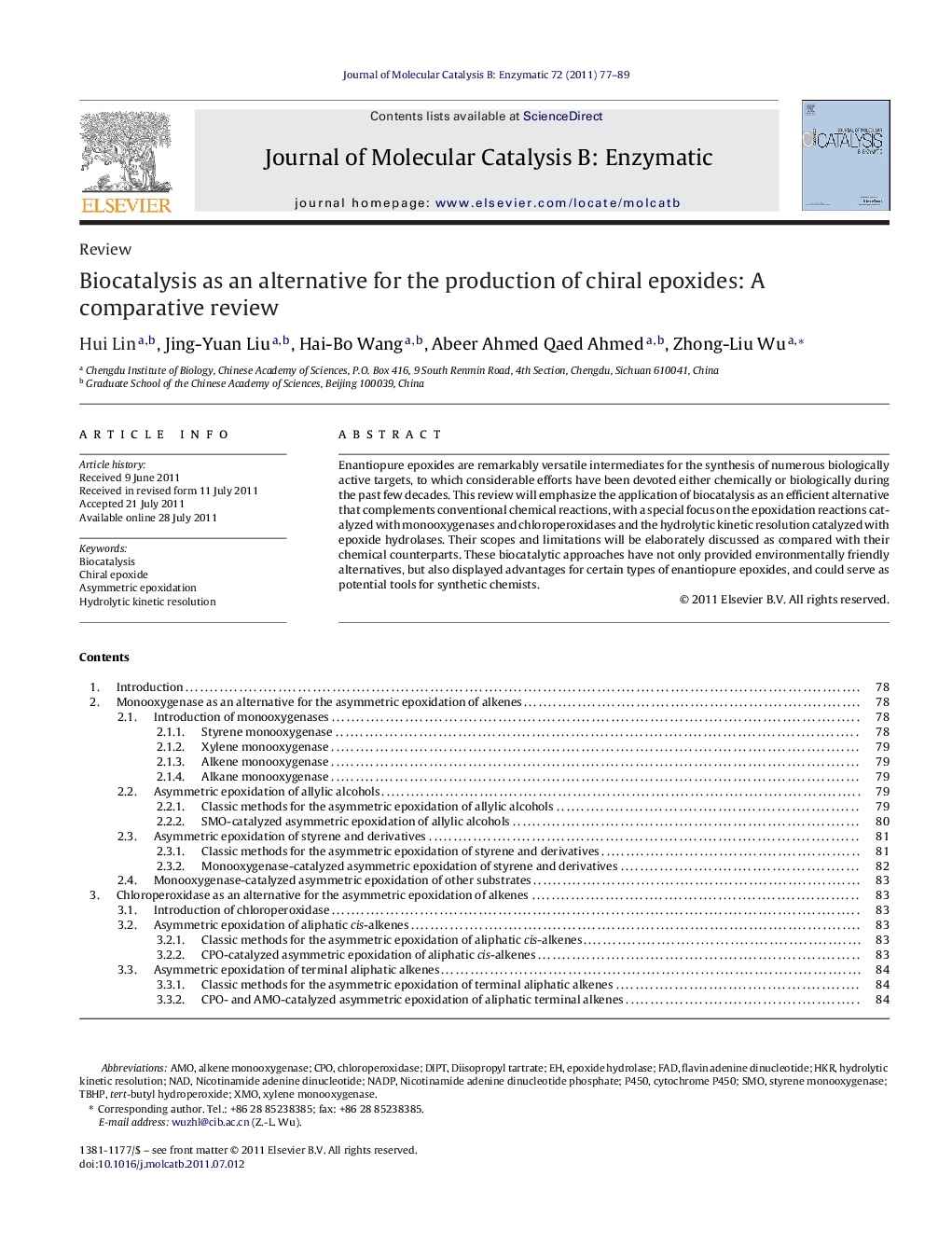| Article ID | Journal | Published Year | Pages | File Type |
|---|---|---|---|---|
| 70166 | Journal of Molecular Catalysis B: Enzymatic | 2011 | 13 Pages |
Enantiopure epoxides are remarkably versatile intermediates for the synthesis of numerous biologically active targets, to which considerable efforts have been devoted either chemically or biologically during the past few decades. This review will emphasize the application of biocatalysis as an efficient alternative that complements conventional chemical reactions, with a special focus on the epoxidation reactions catalyzed with monooxygenases and chloroperoxidases and the hydrolytic kinetic resolution catalyzed with epoxide hydrolases. Their scopes and limitations will be elaborately discussed as compared with their chemical counterparts. These biocatalytic approaches have not only provided environmentally friendly alternatives, but also displayed advantages for certain types of enantiopure epoxides, and could serve as potential tools for synthetic chemists.
Graphical abstract.Figure optionsDownload full-size imageDownload as PowerPoint slideHighlights► The review summarizes several biocatalytic approaches that lead to chiral epoxides with high enantio-purity. ► The scopes and limitations of these biocatalytic approaches are discussed as compared with classic chemo-catalysis. ► Biocatalytic approaches display advantages over chemo-catalysis for some types of enantiopure epoxides. ► Biocatalytic approaches can serve as an alternative to classic methods for synthetic chemists to acquire chiral epoxides.
